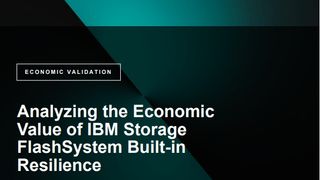Gartner warns against confusion over clouds
The analyst says the term “cloud computing” is causing market confusion.

The adoption of "cloud computing" technology and approaches has led to confusion in the market that could hamper its effective deployment by businesses, according to Gartner.
The analyst said the confusion comes from not clearly differentiating between the internet, web or software-as-a-service (SaaS) based applications that are delivered through the "cloud" and those internet technology infrastructure components used to deliver applications to multiple external customers.
"Mixing the discussion of cloud-enabling technologies' with cloud computing services' creates confusion," said David Mitchell Smith, Gartner vice president and fellow.
So much so, "the term cloud computing has come to mean two very different things: a broader use that focuses on cloud,' and a more-focused use on system infrastructure and virtualisation," he added.
Only last month, Gartner predicted cloud computing would be one of the technology enabling trends that will change the way business is done in the future.
But Smith said it is important to understand the two different prevailing perspectives and set the proper expectations to obtain the anticipated benefits from the massively scalable IT-related capabilities cloud computing.
"This cloud is a global-class phenomenon and a high-level concept that can refer to a range of services extending from system infrastructure (for example, compute services and storage services) through applications (for example, customer relationship management) and business processes (for example, payroll services)," said Gartner.
Get the ITPro. daily newsletter
Receive our latest news, industry updates, featured resources and more. Sign up today to receive our FREE report on AI cyber crime & security - newly updated for 2024.
The second popular perspective is of the use of technologies, including virtualisation and automation that focus more on the computing than on the cloud aspect, with emphasis placed on the technologies that enable the creation and delivery of service-based capabilities, as an extension of traditional data centre approaches for instance.
Smith was, however, quick to point out the connection between the two. "Any provider of cloud computing services must have an environment that includes an infrastructure to support their delivery," he said.
For example, virtualisation is often used to implement this underlying infrastructure to support cloud computing service delivery. "Cloud system infrastructure services are a subset of cloud computing, but not the entire picture," he added.
Gartner advised that, while cloud computing services and technologies are both valuable and should be pursued, IT organisations should clearly separate initiatives involving cloud computing and its services from the use of cloud computing-related concepts and technologies for the creation of internal systems.
A 25-year veteran enterprise technology expert, Miya Knights applies her deep understanding of technology gained through her journalism career to both her role as a consultant and as director at Retail Technology Magazine, which she helped shape over the past 17 years. Miya was educated at Oxford University, earning a master’s degree in English.
Her role as a journalist has seen her write for many of the leading technology publishers in the UK such as ITPro, TechWeekEurope, CIO UK, Computer Weekly, and also a number of national newspapers including The Times, Independent, and Financial Times.





